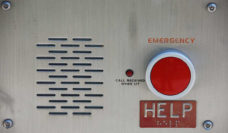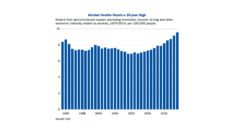Every year, millions of adults in the United States report driving under the influence (DUI) of alcohol. Although significant progress has been made in reducing the incidence of DUI over the past forty years, alcohol-related driving is still a leading cause of traffic-related fatalities, causing more than 10,000 deaths in the United States each year. Because drivers involved in alcohol-related traffic fatalities are 4.5 times more likely to have a prior DUI conviction than those involved in other kinds of traffic fatalities, preventing DUI recidivism has the potential to prevent deaths, injuries, and other harms.
Risky drinking behaviors such as DUI often occur in a social setting. Our social networks—the sets of relationships we have with our friends, family members, neighbors, coworkers, and others—have been shown to affect our health, including risky drinking. At the same time, social networks can also help encourage abstinence among individuals seeking treatment for alcohol dependence. Because of this, we wanted to study the role of social networks on risky drinking behaviors among individuals convicted of a first-time DUI.
We then looked at whether the characteristics of their pre-DUI social networks were related to their risky drinking behaviors at the start of their program, whether they changed their social networks after the completion of the program, and whether changes in their networks were associated with short and long-term risky drinking outcomes.
We found that having a high proportion of drinking partners in the two weeks prior to the DUI was related to having more drinks per week, days of alcohol use, marijuana use, alcohol-related problems, and binge drinking. In other words, social networks were associated with greater risk factors for DUI at the beginning of the program. But did participants change their networks after their DUI?
In a follow-up study, we examined this question and found that our participants had reduced the number of drinking partners in their networks by the time they completed the DUI program. They also reduced the number of drinking partners in their network with whom they drank more alcohol than they wanted to and increased the proportion of network members who supported drinking less.
These changes were related to less risky drinking. Specifically, reducing drinking partners was associated with having fewer drinks per week and lower odds of driving after drinking and intentions to drive after drinking.
Two changes in social networks influenced binge drinking. First, increasing network members who provided emotional support lowered the odds of binge drinking. Second, reducing risky drinking partners (individuals with whom they reported drinking more alcohol than they wanted) was associated with reductions in binge drinking six months after the DUI program ended.
Identifying and reducing risky influences, such as drinking partners, and promoting positive influences (such as those who offer emotional support), can reduce the risk for DUI.
These findings have implications for DUI programs. Identifying and reducing risky influences, such as drinking partners, and promoting positive influences (such as those who offer emotional support), can reduce the risk for DUI. One way to do this is with social network interventions—which map out individuals’ social networks—to help individuals identify problematic versus protective influences. When combined with other kinds of behavioral interventions (e.g., cognitive behavioral therapy), social network interventions can help participants recognize and target changes in the environment that can either trigger or enable risky behaviors such as DUI.
Photo via Getty Images














